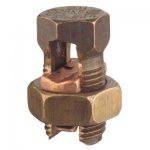Alwayslearningelec
Senior Member
- Location
- NJ
- Occupation
- Estimator
If there was a few light poles that were being feed from a 20a breaker several undred feet away and based on voltage drop calculation you need #6 or 8 wire why would they have a 20a breaker. I though that is you had a 20a breaker pretty much no matter what it would be #12 or #10 wire. I know wire sizes and how many amos they are good for based on conditions etc. but have you ran #6 or #8 wire to a 20a breaker?
The scenerio is (3) 20a circuits being fed from 500' away on a 120v circuit.
The scenerio is (3) 20a circuits being fed from 500' away on a 120v circuit.



